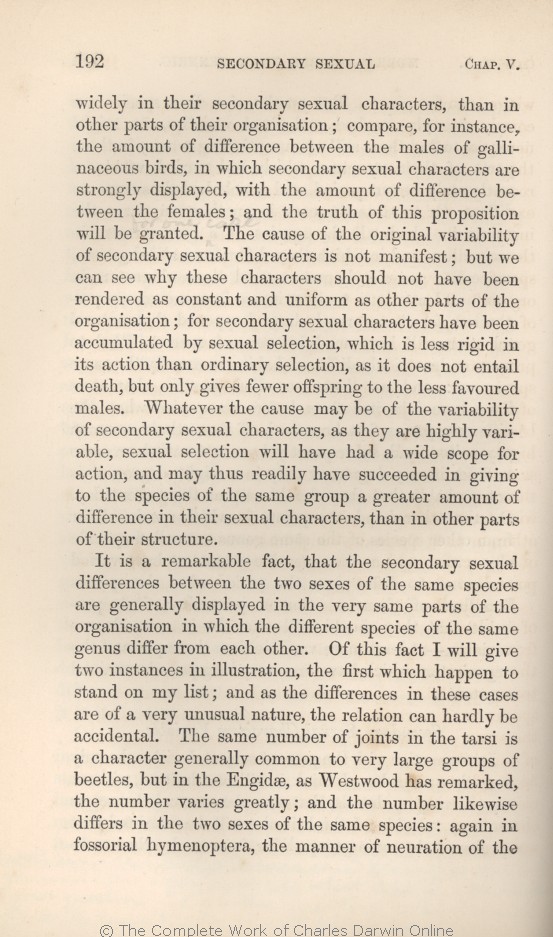secondary sexual
characters, | characters, 1859 1860 1861 1866 1869 | | characters 1872 |
| than in other parts of their organisation; compare, for instance, 1859 1860 1861 1866 1869 |
| are strongly displayed, with 1872 |
| males of gallinaceous birds, in which secondary sexual characters are strongly displayed, with the amount of difference between the females; and the truth of this proposition will be granted. 1869 |
| males of gallinaceous birds, in which secondary sexual characters are strongly displayed, with the amount of difference between their females; and the truth of this proposition will be granted. 1859 1860 1861 1866 |
| females. 1872 |
| secondary sexual 1859 1860 1861 1866 1869 | | these 1872 |
| these characters 1859 1860 1861 1866 1869 | | they 1872 |
| other 1859 1860 1861 1866 1869 | | others, 1872 |
| parts of the organisation; for secondary sexual characters have been 1859 1860 1861 1866 1869 |
| for they are 1872 |
| readily 1859 1860 1861 1866 1869 | readily 1872 |
| succeeded 1859 1860 1866 1869 1872 | | suc- ceeded 1861 |
| their sexual characters, 1859 1860 1861 1866 1869 |
| these 1872 |
| parts of their structure. 1859 1860 1861 1866 1869 |
| respects. 1872 |
|
|
It is a remarkable fact, that the secondary
sexual | sexual 1859 1860 1861 1866 1869 | sexual 1872 |
| different 1859 1860 1861 1866 1869 | different 1872 |
| two instances in illustration, the first 1869 |
| in illustration two instances, the first 1859 1860 1861 1866 |
| in illus- tration the two first instances 1872 |
| generally 1859 1860 1861 1866 1869 | generally 1872 |
| species: 1859 1860 1861 1866 1869 | | species. 1872 |
| again 1859 1860 1861 1866 1869 | | Again 1872 |
| fossorial 1859 1860 1861 1866 1869 | | the fossorial 1872 |
| manner 1859 1860 1861 1866 1869 | | neuration 1872 |
| neuration of 1859 1860 1861 1866 1869 | neuration of 1872 |
|









